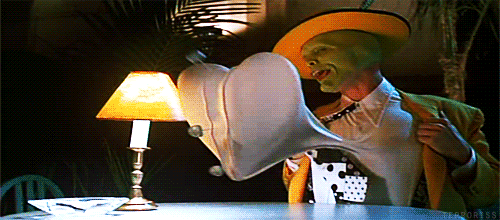Let me offer my limited thoughts on this matter, for once, perhaps I may be able to contribute something beyond a bathroom humor.
I mean is
this what the AP2.5 ECU is actually dealing with? Why on earth do they have such high-res cameras and camera sensors installed? Despite
@jimmy_d's excellent posts, my brain doesn't seem to comprehend this. Instead, my brain screams the question: Wouldn't the reasonable thing to do be to exploit every single pixel from the new camera sensors? Shouldn't we expect to have an on-board computer that chews through all of it, even if it would spit much of it away after doing it's thing? Why downsample
before Vision gets a chance to look over it?
Just asking. Hoping for intelligent answers...
This is a great question, and makes me think of an analogy with autism. The issue with autism is not the number of neurons in the brain or its computing power, but is almost the opposite. It's the lack of a well-timed pruning process that allows the brain to be efficient at parsing data and then assigning salience. In other words, if the brain that can't eliminate any of the noise from the perceived environment, then picking up on social cues becomes almost impossible. Without a massive pruning process, it is too difficult to know which noise to eliminate.
Perhaps this is why a lower number of pixels is so important. It's attempting to parse the data since adding more pixels likely complicates the task exponentially.
Your rear-view data stream is included in your main visual data stream to your brain, but the brain segments it off and extracts meaningful data from it knowing that "that little blob of vision is separate." Often it's more efficient to bundle multiple data sources into software as a single data-stream even though they're technically different streams just so that you're copying/operating on the data once instead of having overhead of processing 8 different cameras. You could naively scale and crop the other cameras and then slap them onto the side of the main camera. There is some interesting research on how compound eye animals see. A fly is not creating a perfect spherical stitched image in their brain like how our brain synthesizes two eyes into one. How objects move between compound eye views is actually in of itself interesting to their vision systems.
This is a very interesting post IMHO, and reminds me of
@lunitiks explanation of AP2 versus AP1 (the alien picture versus the cyclops cat).
However, the eyes of a fly are not akin to having multiple cameras. Without actually knowing much about entymology, my guess is that the fly's eyes would be more like two primitive eyes with a kaleidoscopic lenses.
My guess that the eye of the fly is superior from an evolutionary perspective because it is better at peripheral vision without much specificity at all, kind of the opposite of an eagle's eye, where it can see crazy detail. I suspect that the challenge between EAP and FSD is going to be making a really good fly's eyes for EAP.... and to do FSD, we'd need to mimic a primitive human brain... which is infinitely more complex.
So I'm not certain if
@im.thatoneguy's description of human vision would accurately reflect what is actually happening in the human brain with respect to how the brain assigns meaning to different visual fields, though his software data-stream comment is very insightful for someone like me without the programming background. Since I'm more of a brain nerd, I go back to the learning the fact that the human brain must be
trained to see. There has been some interesting clinical observations of patients with respect to rare instances in which there has been a reversal of certain forms of congenital blindness, i.e. situations where a person may be able to have achieve vision for the first time. Their brain can't recognize anything at all except bright chaos for a very long time.



